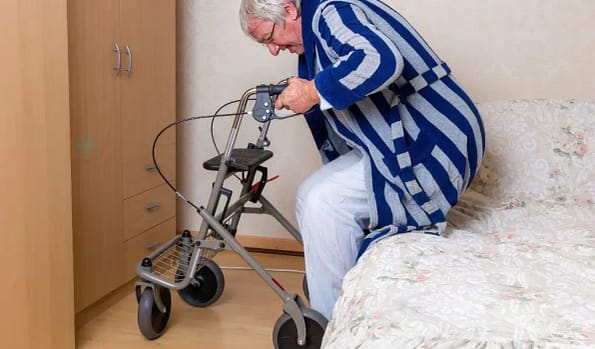What is the role of mobility aids like rollators and walkers in fall prevention?
Introduction to Mobility Aids
Mobility aids play a crucial role in healthcare, offering support and stability for individuals with walking difficulties or balance issues. Rollators and walkers, key types of mobility aids, are designed to prevent falls, a significant risk among the elderly and those with mobility impairments. Rollators, equipped with wheels and brakes, are ideal for those who can walk but need assistance with balance and endurance, while walkers provide more substantial support for users requiring greater balance aid. These tools are vital in enhancing mobility and independence, ensuring safety, and reducing the risk of injury from falls.
The Importance of Fall Prevention
Statistics on Falls Among the Elderly and Disabled in Australia
In Australia, falls are a major health concern, especially among the elderly. The Australian Institute of Health and Welfare reports that falls are the leading cause of hospitalised injury, accounting for 41% of such injuries in a recent year. Furthermore, over 30% of adults over 65 experience at least one fall per year. These falls not only lead to immediate injuries but also significantly increase the risk of subsequent falls, creating a cycle that can severely impact health and mobility.
Consequences of Falls
The impact of falls extends beyond immediate physical injury. They are a leading cause of hip fractures, with a significant percentage requiring hospitalisation. Beyond physical harm, falls can induce psychological effects such as a fear of falling, which leads to reduced activity levels, social isolation, and a decline in quality of life. This decreased activity can exacerbate health issues and increase the risk of future falls, creating a detrimental cycle of health deterioration. Additionally, the economic burden of falls on the healthcare system is substantial, with costs including hospital care, rehabilitation, and long-term care needs.

How Rollators and Walkers Aid in Fall Prevention
Stability and Support Features
Rollators and walkers are ingeniously designed to enhance stability and support, key factors in preventing falls. They provide a sturdy framework to lean on, redistributing weight and reducing the load on lower limbs. This support is crucial for individuals with weakened muscles or balance issues. Key features include:
- Grip handles: Ergonomically designed for comfortable, secure holding.
- Wide base: Offers greater stability and balance.
- Adjustable height: Can be tailored to the user’s height, ensuring proper posture.
- Non-slip feet (walkers): Enhance grip on various surfaces, reducing slip risks.
Design Innovations for Enhanced Safety
Modern rollators and walkers incorporate several design innovations that further reduce the risk of falls. These features not only improve safety but also enhance user confidence, encouraging more mobility and independence. Some of these innovations are:
- Wheels with brakes (rollators): Allow smooth movement and easy stopping, crucial for navigating different terrains.
- Lightweight materials: Improve maneuverability without sacrificing strength.
- Foldable design: Facilitates easy storage and transport, encouraging users to take their aids wherever they go.
- Padded seats (some rollators): Offer rest points, reducing fatigue during prolonged use.
Through these stability features and design innovations, rollators and walkers significantly contribute to fall prevention, enhancing the safety and independence of users.
Choosing the Right Mobility Aid
Assessing Individual Needs and Conditions
Selecting the right mobility aid is crucial and should be based on individual needs and conditions. Key factors to consider include:
- Mobility level: Assess the degree of support needed. Can the individual stand unassisted or do they require substantial support?
- Balance issues: Consider if the person has balance problems which might necessitate a more stable option.
- Strength and endurance: Evaluate the user’s physical strength. A lightweight walker might be ideal for someone with limited upper body strength.
- Indoor or outdoor use: Determine the primary use environment. Outdoor use may require a sturdier, more adaptable option like a rollator.
- Storage and transportability: Consider the ease of folding and storing the aid, especially if the user travels frequently.
Tips for Selecting the Appropriate Rollator or Walker
Once the needs are assessed, the following tips can help in selecting the most suitable mobility aid:
- Consult a healthcare professional: Seek advice from a physiotherapist or occupational therapist for a professional recommendation.
- Try before buying: If possible, test different models to see which one feels most comfortable and suitable.
- Check adjustability: Ensure the height and handles can be adjusted for a custom fit.
- Review safety features: Look for non-slip feet, sturdy frames, and effective brakes (for rollators).
- Consider accessories: Look for useful add-ons like baskets or trays for convenience.
By carefully assessing individual needs and following these tips, users can find a mobility aid that significantly enhances their independence and reduces the risk of falls.

Best Practices for Using Mobility Aids
When incorporating mobility aids like rollators and walkers into daily life, understanding and adhering to best practices is essential for maximising their benefits. Proper training and adaptation are crucial; users should be educated on the correct way to use these aids, focusing on posture, handling, and navigating different terrains. This training, possibly guided by healthcare professionals, ensures safety and enhances confidence in using the aids effectively. Equally important is the maintenance and care of these devices. Regular checks and upkeep, such as inspecting brakes, wheels, and structural integrity, are vital for ensuring the longevity and reliability of the aids. By combining proper usage training with diligent maintenance, users can significantly improve their mobility and independence while minimising the risk of falls and injuries.





















